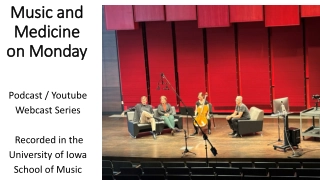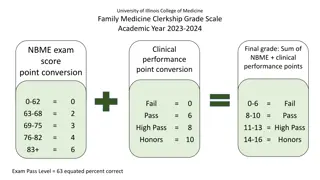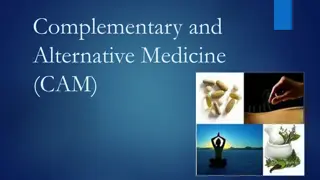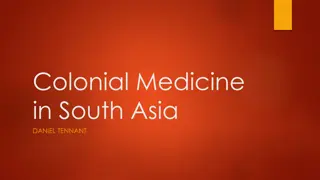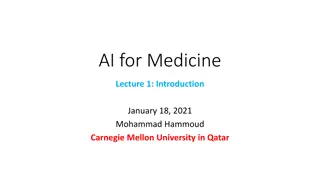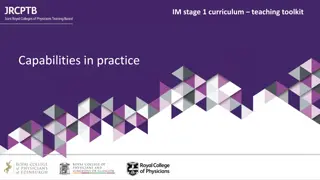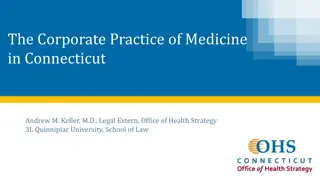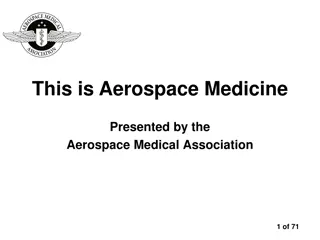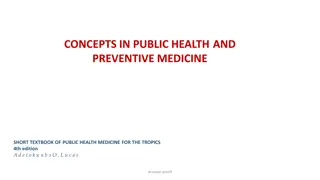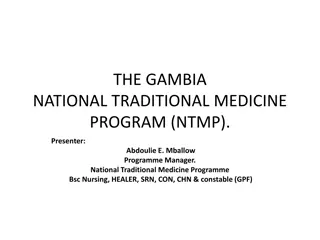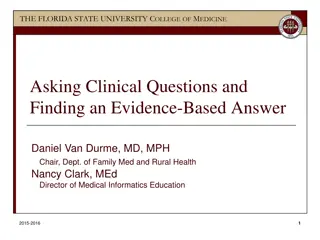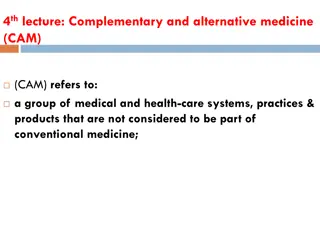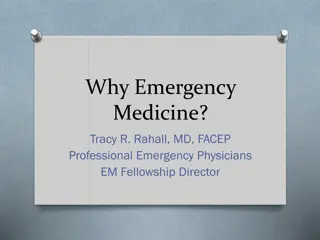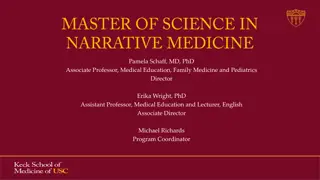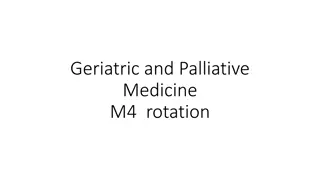Evolution of Medicine Through Time
Explore the historical progression of medicine from prehistoric times to the medieval era, focusing on societies like the Egyptians, Greeks, Romans, and beyond. Witness the transformations in surgical practices, disease management, and public health strategies across different civilizations, showcasing advancements in knowledge and challenges faced in each period.
Download Presentation

Please find below an Image/Link to download the presentation.
The content on the website is provided AS IS for your information and personal use only. It may not be sold, licensed, or shared on other websites without obtaining consent from the author. Download presentation by click this link. If you encounter any issues during the download, it is possible that the publisher has removed the file from their server.
E N D
Presentation Transcript
Study through Time To do well in this exam you need to have a good overall knowledge of a wide period of time. You need to be able to identify how medicine changed and give reasons why. You also need to understand that during certain periods there was no change and explain why. There are 3 key areas to focus on: Surgery & Anatomy, Disease & Infection and Public Health
Prehistory Limited medical knowledge. Small societies-often isolated. Low life expectancy, many suffered from issues such as arthritis and other bone disease. Medical treatment was usually delivered by medicine men or by female members of a family. Often they were herbal. Little understanding of anatomy or public health.
Egyptians One of the first civilisations to have developed ideas on medicine. They were a large and prosperous society. Medical knowledge was based on common sense and religious belief. The Egyptians were farmers and used irrigation, this influenced their ideas on anatomy and public health. They were generally clean and lived longer than prehistoric people. The religious practice of mummification improved their limited knowledge of anatomy.
Greeks Another rich and prosperous society, many Greeks had the time to study the various problems of the world leading to advancements in Maths, astronomy and the appearance of democracy. The Greeks believed in keeping clean and public baths were common. They also believed in religion as a method to stay healthy, visiting Asclepions. Some Greeks, like Aristotle and Hippocrates, began to think more scientifically leading to more common sense diagnosis, recording of treatments and the Four Humours Theory.
Romans The ultimate opportunists. They took the best parts of civilisations they conquered and subsumed. Many of their medical ideas were based on their large and successful army. Unlike previous societies the Roman government took an active role in improving public health with fresh water and public baths common in most roman towns/cities. Knowledge of anatomy was improved by men like Galen although the lack of dissections performed meant most of the information acquired was from primates.
Medieval After the collapse of the Roman Empire many societies, like Britain, were taken over by Germanic tribes like the Anglo-Saxons. Much of the Roman knowledge was lost and then suppressed by the Catholic Church. Religion was the main influence on cause and prevention of disease. Public health was poor for most of this period with cramped, dirty streets allowing diseases like Bubonic plague to become pandemics. The Black Death made some medieval people question their established views.
The Renaissance In the 15th& 16thCenturies attitudes towards questioning accepted medical knowledge softened. Anatomists like Vesalius were allowed to dissect corpses and their work was spread using the newly invented printing press. This invention allowed men like Par and Harvey to spread their ideas. Public Health still remained an issue as people did not understand the cause of disease, many people also stuck to their outdated beliefs despite the evidence.
The Industrial Revolution-Public Health This period saw the increase of mass production and the movement from Agriculture to Industry. More people lived in industrial cities like Manchester or Liverpool. There was little planning for this population shift and conditions became poor with disease like cholera spreading. Unlike the medieval period governments tried to help with men like John Snow and Edwin Chadwick helping to improve conditions.
The Industrial Revolution-Surgery At the start of the 19thCentury surgery was fast, painful and often led to infection. The IR was characterised by attempts to stop this. Anaesthetics were developed by men like Davy and then James Simpson who discovered chloroform. The move to aseptic surgery began with Semmelweis and gained accepetance through the work of Joseph Lister. Pasteur s discovery of Germ Theory gave the move more credibility in the medical profession.
The Industrial Revolution-Disease & Infection In the large and dirty industrial cities, disease such as cholera, typhus and tuberculosis were rife. Scientists began to fight against various disease. Jenner used older theories on inoculation to develop a vaccination for smallpox. Pasteur s discovery of Germ Theory and his subsequent work on vaccination allowed for the prevention of diseases like Cholera. By the end of the 19thCentury scientists like Koch were able to identify and destroy individual bacteria.
20thCentury-Public Health In the early 20thCentury the Liberal Government began to release reforms on public health. The findings of Rowntree in York and the state of volunteers for the Boer War stimulated this. National insurance and other schemes were introduced. By 1948, the sacrifices of the British people in WWI & II were rewarded by the establishment of the Welfare State and the NHS providing benefits and free health care at the pointy of delivery.
20thCentury-Surgery The introduction of successful blood transfusions allowed many operations to be extended and more care to be taken. The two world wars allowed surgeons to develop revolutionary new techniques in the fields of plastic surgery. The invention of penicillin also cut down on the risk of infection. By the end of the century, transplant and key while surgery were possible and complete aseptic environments were the norm.
20thCentury-Disease & Infection Now that scientists understood the origin of disease they could begin to work on prevention and potentially cures. Paul Ehrlich s magic bullets could target diseases like syphilis and save millions of lives. Flemings discovery of penicillin was possibly the most important development. Infection could now be defeated. It took the intervention of the US government and the work of Florey & Chain for the drug to be mass produced.


